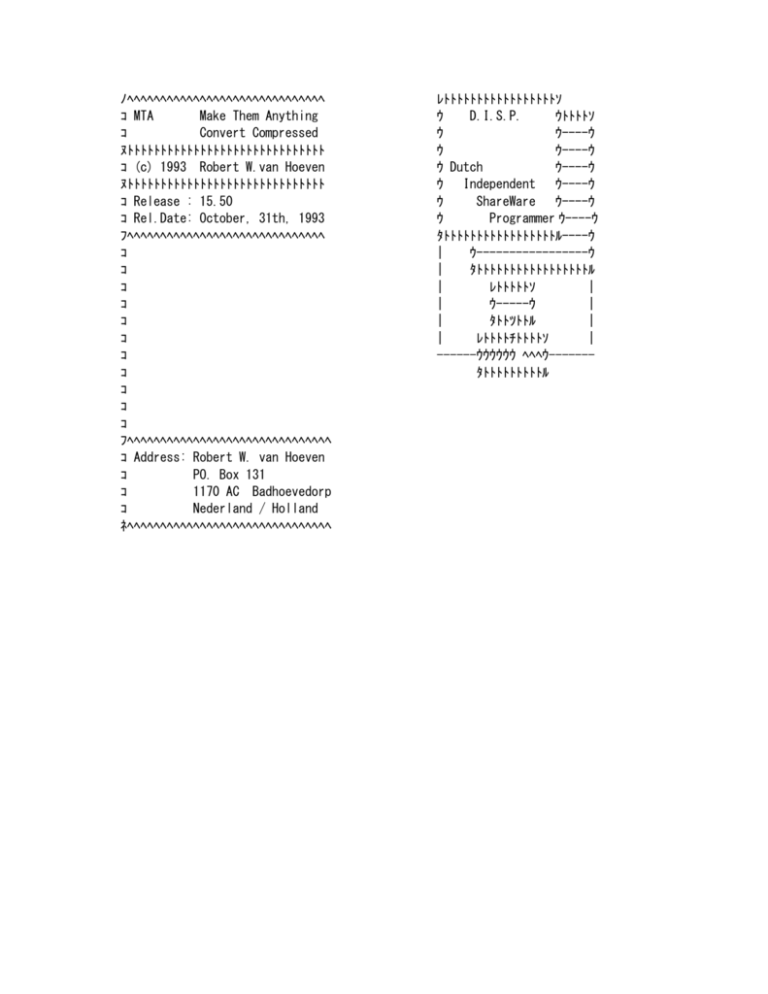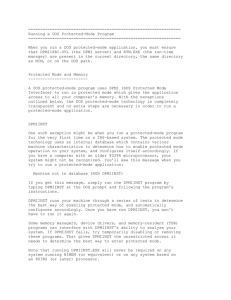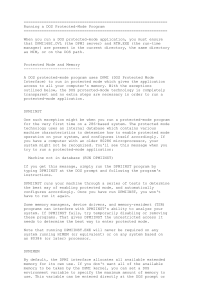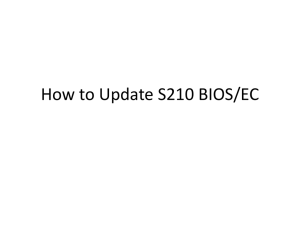ÉÍÍÍÍÍÍÍÍÍÍÍÍÍÍÍÍÍÍÍÍÍÍÍÍÍÍÍÍÍÍ ÚÄÄÄÄÄÄÄÄÄÄÄÄÄÄÄÄĿ º MTA Make Them
advertisement

ノヘヘヘヘヘヘヘヘヘヘヘヘヘヘヘヘヘヘヘヘヘヘヘヘヘヘヘヘヘヘ コ MTA Make Them Anything コ Convert Compressed ヌトトトトトトトトトトトトトトトトトトトトトトトトトトトトトト コ (c) 1993 Robert W.van Hoeven ヌトトトトトトトトトトトトトトトトトトトトトトトトトトトトトト コ Release : 15.50 コ Rel.Date: October, 31th, 1993 フヘヘヘヘヘヘヘヘヘヘヘヘヘヘヘヘヘヘヘヘヘヘヘヘヘヘヘヘヘヘ コ コ コ コ コ コ コ コ コ コ コ フヘヘヘヘヘヘヘヘヘヘヘヘヘヘヘヘヘヘヘヘヘヘヘヘヘヘヘヘヘヘヘ コ Address: Robert W. van Hoeven コ PO. Box 131 コ 1170 AC Badhoevedorp コ Nederland / Holland ネヘヘヘヘヘヘヘヘヘヘヘヘヘヘヘヘヘヘヘヘヘヘヘヘヘヘヘヘヘヘヘ レトトトトトトトトトトトトトトトトトソ ウ D.I.S.P. ウトトトトソ ウ ウーーーーウ ウ ウーーーーウ ウ Dutch ウーーーーウ ウ Independent ウーーーーウ ウ ShareWare ウーーーーウ ウ Programmer ウーーーーウ タトトトトトトトトトトトトトトトトトルーーーーウ | ウーーーーーーーーーーーーーーーーーウ | タトトトトトトトトトトトトトトトトトル | レトトトトトソ | | ウーーーーーウ | | タトトツトトル | | レトトトトチトトトトソ | ------ウウウウウウ ヘヘヘウ------タトトトトトトトトトル レトトトトトトトツトトトトトトトトトトトトトトトトトトトトトトトトトトトトトトトトトトトトトトトトトトトトトトトトトトトトトトトトトトトトトソ ウ 0 ウ Table of contents ウ タトトトトトトトチトトトトトトトトトトトトトトトトトトトトトトトトトトトトトトトトトトトトトトトトトトトトトトトトトトトトトトトトトトトトトル 1 ---1.1 1.2 1.3 1.3.1 1.3.2 1.3.2 1.3.2 1.4 1.5 1.6 1.7 1.8 1.9 MTA protected-mode version (MTADPMI.EXE) Files contained in this archive Running MTA in protected-mode Protected Mode and Memory DPMIINST DPMIMEM RTMRES Extended Memory Running MTADPMI from Windows Running MTADPMI in Windows Standard Mode Running MTADPMI from a Windows DOS prompt Controlling the Amount of memory the Run-Time Manager uses Important note for Borland C++ and Paradox 4.0 users Important note for multi-tasking users レトトトトトトトツトトトトトトトトトトトトトトトトトトトトトトトトトトトトトトトトトトトトトトトトトトトトトトトトトトトトトトトトトトトトトソ ウ 1 ウ MTA protected-mode version (MTADPMI.EXE) ウ タトトトトトトトチトトトトトトトトトトトトトトトトトトトトトトトトトトトトトトトトトトトトトトトトトトトトトトトトトトトトトトトトトトトトトル 1.1 Files contained in this archive トトトトトトトトトトトトトトトトトトトトトトトトトトトトトトトトトトトト MTADPMI.EXE (the protected-mode version of MTA.EXE) can be used on 80286 and higher machines. To run MTADPMI, you need some extra files which are included in a separate archive. You should extract this separate archive (MTA__RTL.???) first before you continue with the remainder of this document. The MTA__RTL.??? archive contains the following files: RTM.EXE RTMRES.EXE DPMI16BI.OVL DPMIINST.EXE - the Borland International DPMI Run-Time Manager the Borland International DPMI Resident Run-Time Manager The Borland International DPMI Overlay File Configures RTM.EXE to your system specifications 1.2 Running MTA in protected-mode トトトトトトトトトトトトトトトトトトトトトトトトトトトトトトトトトトトト When you run MTA as a protected-mode application (use the MTADPMI.EXE version you obtained), you must ensure that DPMI16BI.OVL (the DPMI server), and RTM.EXE (the run-time manager) are present in the current directory, the same directory as the application, or on the DOS path. 1.3 Protected Mode and Memory トトトトトトトトトトトトトトトトトトトトトトトトトトトトトトトトトトトト A DOS protected-mode program uses DPMI (DOS Protected Mode Interface) to run in protected mode which gives the application access to all your computer's memory. With the exceptions outlined in the next paragraphs below, the DOS protected-mode technology is completely transparent and no extra steps are necessary in order to run a protected-mode application. 1.3.1 DPMIINST トトトトトトトトトトトトトトトトトトトトトトトトトトトトトトトトトトトト One such exception might be when you run a protected-mode program for the very first time on a 286-based system. The protected mode technology uses an internal database which contains various machine characteristics to determine how to enable protected mode operation on your system, and configures itself accordingly. If you have a computer with an older 80286 microprocessor, your system might not be recognized. You'll see this message when you try to run a protected-mode application: 'Machine not in database (RUN DPMIINST)' If you get this message, simply run the DPMIINST program by typing DPMIINST at the DOS prompt and following the program's instructions. DPMIINST runs your machine through a series of tests to determine the best way of enabling protected mode, and automatically configures accordingly. Once you have run DPMIINST, you won't have to run it again. Some memory managers, device drivers, and memory-resident (TSR) programs can interfere with DPMIINST's ability to analyze your system. If DPMIINST fails, try temporarily disabling or removing these programs. That gives DPMIINST the unrestricted access it needs to determine the best way to enter protected mode. Note that running DPMIINST.EXE will never be required on any system running HIMEM (or equivalent) or on any system based on an 80386 (or later) processor. 1.3.2 DPMIMEM トトトトトトトトトトトトトトトトトトトトトトトトトトトトトトトトトトトト By default, the DPMI interface allocates all available extended memory for its own use. If you don't want all of the available memory to be taken by the DPMI kernel, you can set a DOS environment variable to specify the maximum amount of memory to use. This variable can be entered directly at the DOS prompt or inserted in your AUTOEXEC.BAT file, using this syntax: SET DPMIMEM=MAXMEM nnnn where nnnn is the amount of memory in kilobytes. For example, if you have a system with 4MB and want the DPMI kernel to use only 2MB of it, leaving the other 2MB alone, the DPMIMEM variable would be set as follows: SET DPMIMEM=MAXMEM 2048 Some memory managers, like QEMM or 386^Max, allow allocating the same area of memory as either extended or expanded and many older applications can use only expanded memory (EMS). By using the DPMIMEM DOS environment variable to limit the amount of extended memory used by the DPMI server, your system will still have expanded memory available for use by older applications. 1.3.2 RTMRES トトトトトトトトトトトトトトトトトトトトトトトトトトトトトトトトトトトト RTMRES preloads the protected-mode system. Preloading the DPMI server lets you load a protected-mode program slightly faster. RTMRES will start a program if you specify a program name as a parameter. If no parameter is specified, RTMRES will run a DOS shell. Type EXIT to close the shell. RTMRES is especially useful if you start, exit, and start a protected-mode program frequently. Normally, every time you run a protected-mode application, the DPMI server is loaded. If you've run RTMRES previously, the server is already present, and the protected-mode application loads faster. 1.3.2 Extended Memory トトトトトトトトトトトトトトトトトトトトトトトトトトトトトトトトトトトト A protected-mode application interacts with the DPMI server through Borland's run-time manager (RTM.EXE). By default, a protected-mode application uses all the extended memory reserved by the DPMI kernel. 1.4 Running MTADPMI from Windows トトトトトトトトトトトトトトトトトトトトトトトトトトトトトトトトトトトト A DOS protected-mode program will run in Windows in 386 enhanced mode. To configure the amount of memory available to the application, create a Windows PIF file. To learn more about PIF files, see your Microsoft Windows User's Guide. 1.5 Running MTADPMI in Windows Standard Mode トトトトトトトトトトトトトトトトトトトトトトトトトトトトトトトトトトトトトトトトトトトト In order to run a protected-mode program from Windows standard-mode, you must set the DPMIMEM DOS environment variable and run RTMRES (both are described above) before running Windows. Make sure your DPMIMEM setting leaves enough physical memory for Windows to operate. Note that once you've run RTMRES, you won't be able to run Windows in 386 enhanced mode until you exit the RTMRES shell (by typing EXIT at a DOS prompt). 1.6 Running MTADPMI from a Windows DOS prompt トトトトトトトトトトトトトトトトトトトトトトトトトトトトトトトトトトトトトトトトトトトトト To run a DOS protected-mode application from a Windows DOS prompt, you must first modify the DOSPRMPT.PIF file found in your Windows directory so that the protected-mode program will be able to use extended memory. Using the Windows PIF editor, open the DOSPRMPT.PIF file, and indicate the amount of extended memory you want the protected-mode program to use. If you are unsure how to use the PIF editor, see your Microsoft Windows User's Guide. 1.7 Controlling the Amount of memory the Run-Time Manager uses トトトトトトトトトトトトトトトトトトトトトトトトトトトトトトトトトトトトトトトトトトトトトトトトトトトトトトトトトトトトトト The run-time manager attempts to free as much conventional memory as possible (by moving moveable memory blocks into extended memory, for example) before starting an application. No attempt is made to release extended memory, however. Therefore, if you are going to run other protected-mode applications that don't use the run-time manager (Paradox 4.0, for example), use the RTM DOS environment variable to control the run-time manager's allocation of memory. Use the DOS command line to add the RTM environment variable to your system's DOS environment. Here is the syntax: SET RTM=[option nnnn] The following table lists the options you can use. nnnn can be a decimal number or a hex number in the form of xAB54 or xab54. Option Description ------------------------------------------------------------EXTLEAVE nnnn Always leave at least nnnn kilobytes of extended memory available. The default value is 640K. EXTMAX nnnn Don't allocate more than nnnn kilobytes of extended memory. The default value is 4 gigabytes. In Windows, the default value is one-half the available memory. EXTMIN nnnn If fewer than nnnn kilobytes are available after applying EXTMAX and EXTLEAVE limits, terminate with an Out of Memory message. The default value is zero. REALLEAVE nnnn Always leave at least nnnn paragraphs of real memory available. The default value is 64K or 4096 paragraphs. REALMAX nnnn Don't allocate more than nnnn paragraphs of real memory. The default value is 1 megabyte or 65,535 paragraphs. REALMIN nnnn If fewer than nnnn paragraphs are available after applying REALMAX and REALLEAVE, terminate with an Out of Memory message. The default value is zero. The following DOS command limits RTM to 2M bytes of extended memory, and ensures that 128K bytes of real memory are left unallocated: SET RTM=EXTMAX 2048 REALLEAVE 8192 1.8 Important note for Borland C++ and Paradox 4.0 users トトトトトトトトトトトトトトトトトトトトトトトトトトトトトトトトトトトトトトトトトトトトトトトトトトトトトトトトトトトトトト The DPMILOAD.EXE and DPMI16BI.OVL files provided in this package replace the older ones that came with Paradox 4.0 and BC++ 3.0 or later. Delete or rename the older versions and make sure the newer ones are on your DOS path (both Paradox and BC will search the path and find the newer versions). If you plan to shell out from Paradox or BC++ to run another protected-mode application, first limit the amount of extended memory used by Paradox or BC++. For Paradox, use its /extk command-line parameter; and for BC++, use its /x command-line parameter. Refer to the Paradox or BC++ documentation for more information on the use of command-line options. 1.9 Important note for multi-tasking users トトトトトトトトトトトトトトトトトトトトトトトトトトトトトトトトトトトトトトトトトトトトトトトトトトトトトトトトトトトトトト If you have loaded SHARE.EXE or any equivalent (like the internal OS/2 sharing), you MUST keep MTADPMI.EXE READ-ONLY. If you don't use any of these programs (e.g. you are not running under DV, Windows, OS/2 and so on), you can make MTADPMI.EXE a normal file in the following way: ATTRIB -R MTADPMI.EXE ウ If the MTADPMI.EXE (by accident) is converted to a normal file WITHOUT ウ the read-only attribute and you use any kind of sharing in your system, ウ you need to change MTADPMI.EXE back to read-only in the following way: ウ ウ ATTRIB +R MTADPMI.EXE ウ [------------------------ END OF DOCUMENT ----------------------------]



